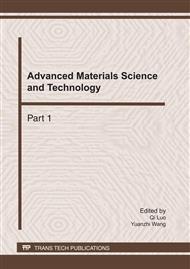p.14
p.19
p.25
p.31
p.37
p.43
p.49
p.54
p.60
Invariant Features Tracking Based on Transiently Chaotic Neural Network for Markerless Augmented Reality
Abstract:
Tracking and registration of camera and object is one of the most important issues in Augmented Reality (AR) systems. Markerless visual tracking technologies with image feature are used in many AR applications. Feature point based neural network image matching method has attracted considerable attention in recent years. This paper proposes an approach to feature point correspondence of image sequence based on transient chaotic neural networks. Rotation and scale invariant features are extracted from images firstly, and then transient chaotic neural network is used to perform global feature matching and perform the initialization phase of the tracking. Experimental results demonstrate the efficiency and the effectiveness of the proposed method.
Info:
Periodical:
Pages:
37-42
Citation:
Online since:
January 2011
Authors:
Price:
Сopyright:
© 2011 Trans Tech Publications Ltd. All Rights Reserved
Share:
Citation:


